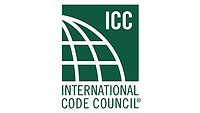One rainwater standard beats two
ICC and ASPE offer competing proposals for reusing rainwater safely.

Almost five years ago I wrote a column that emphasized the importance of good system design for the capture, storage and transport of recycled water. Without proper design, I noted, systems that reuse graywater and rainwater can create health hazards that far outweigh any green benefits.
By 2008, most of the plumbing industry had seen the light on the benefits of green buildings. My column appeared in PM Engineer, PM’s sister title, and said the role of plumbing engineers would grow as building owners relied increasingly on their design expertise to transform sustainable construction concepts into reality.
“This next phase is going to get messy,” I wrote then. “You’ll have to sort through conflicting information from different sources by becoming as knowledgeable as you can be about green buildings.”
It appears that some of this has come to pass. Two competing standards on the design of rainwater catchment systems are the most recent example.
The International Code Council and American Society of Plumbing Engineers issued statements late last year on the rainwater standard each is developing. At this point, ASPE is out for public comment on the second edition of its standard on rainwater catchment systems. ICC has issued a call for members for a committee on the same subject.
Each group hopes the American National Standards Institute will designate its proposal as a national standard. Both put a concern for public safety at the forefront of their motivation for developing a rainwater standard. And, we believe that’s the case.
ICC says it is “continuing to move forward with resources that will facilitate expanded application of rainwater harvesting systems, and ensure the preservation of health and safety while saving water. ICC Standard 805 will apply to the design, installation and maintenance of rainwater collection systems intended to collect, store, treat, distribute and utilize rainwater for potable and nonpotable applications.
“This is especially important for regions experiencing water shortages and water-quality issues. Many jurisdictions are seeking an industry standard to help them develop guidelines and provide a minimal and safe water source in a way that works with their existing codes. Many drought-stricken jurisdictions, as well as those wishing to conserve natural resources, have undertaken efforts to provide their citizens with guidelines, codes and best management practices to enable the use of these systems locally.”
ASPE has developed its standard with the American Rainwater Catchment Systems Association with sponsorship support from the International Association of Plumbing and Mechanical Officials.
ASPE states: “Rainwater catchment systems provide an important alternate source of water, and quality design standards are critical for protecting the health of those who use water from these installations in potable and nonpotable applications. ARSCA/ASPE 63 is designed to assist engineers, designers, plumbers, builders/developers, local government and end users in safely implementing a rainwater catchment system using precipitation from a rooftop and other hard, impervious surfaces. It applies to new installations as well as alterations, additions, maintenance and repairs to existing rainwater catchment installations.”
Proponents of the two standards have engaged in a fair amount of back and forth about which standard came first, which one does a better job of serving the public good and, ultimately, which one ANSI should make a national standard.
One argument contends that competition between two national standards would benefit the rainwater catchment industry because it would raise awareness of system design, installation, operation and maintenance among plumbing professionals and others. That scenario could happen.
Former ARCSA President Bob Boulware, P.E., makes a counter-argument.
“This is not that big of an industry,” he told me. “One standard would help the industry, which is still developing. Revisions need to be made in the future to what we proposed. At the end of the day, we need a proper way to collect, store and transport rainwater.”
In an ideal world, we would agree that one standard would bring more clarity than two. We encourage all parties to work toward that end by working out differences that, we suspect, are not insurmountable.
If that fails to happen, we agree with Boulware that engineers, contractors and other plumbing industry professionals need to do their homework on how to reuse rainwater safely. That includes learning about the technology and how rainwater systems operate safely in Australia, New Zealand, Germany, the United Kingdom and Canada.
Sorting through conflicting information from different sources and becoming as knowledgeable as you can about rainwater catchment has not changed in the last five years.
HELPFUL LINKS:
Looking for a reprint of this article?
From high-res PDFs to custom plaques, order your copy today!







